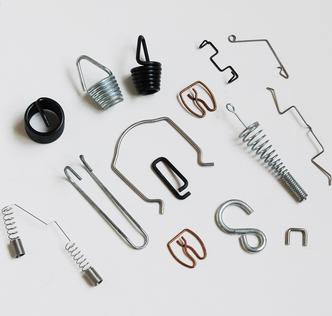The common materials of springs mainly include the following:
Spring steel: This is an alloy steel specifically used to make springs, which has good elastic and fatigue strength, and is able to maintain stable properties under long-term repeated loading. It is usually made of high-quality carbon steel or alloy structural steel, which has high hardness and strength, and can meet the requirements of bending and torsion of the spring when working.
Stainless steel: Due to its good corrosion resistance and excellent mechanical properties, stainless steel is also widely used in spring manufacturing. Stainless steel springs have the characteristics of oxidation resistance, corrosion resistance, wear resistance, etc., and are suitable for use in some special environments, such as food processing, medical equipment and other fields.
Copper alloy: Copper alloy springs have good electrical and thermal conductivity, and are suitable for some occasions that require electrical conductivity, such as electronic equipment, communication equipment and other fields. The advantage of copper alloy springs is that they have good electrical and thermal conductivity, which can meet the requirements of some special working conditions.
Alloy steel: Alloy steel is a type of steel that contains alloying elements and has high strength and hardness. Alloy steel springs are widely used in some occasions with high requirements for strength, such as automobile suspension systems, construction machinery and other fields.
In addition to the above main materials, steel wire, bronze, etc. are also commonly used in the manufacture of springs. Steel wire is a traditional material for making springs, which has the characteristics of high strength, long life, corrosion resistance, easy processing, etc., and is widely used in industry, furniture and other fields. Bronze springs have good conductivity and corrosion resistance, suitable for high-frequency and high-temperature environments, not only used in the electronics industry, but also widely used in clocks, instruments, astronomical telescopes and other fields.
